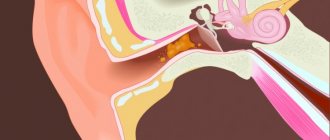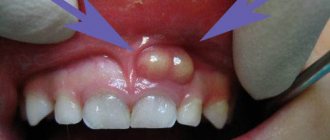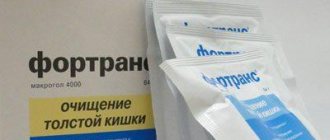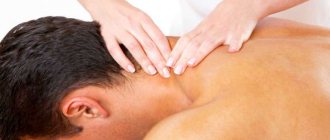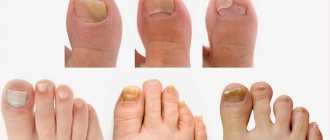Rinsing your nose with salt water: how to properly rinse your nose with salt
In autumn and winter, during periods of cold weather and outbreaks of respiratory viral diseases, many are faced with such troubles as a runny nose and sinusitis.
Don’t rush to occupy clinics and pharmacies, buying expensive medicines and devices! A simple and proven folk remedy comes to the rescue: rinsing the nose with salt water. Of course, being in a maritime climate is optimal for treating sinusitis or acute rhinitis, but not everyone has this opportunity. We will tell you how to make a saline solution for rinsing the nose in our article.
How to rinse your nose with sinusitis? Preparing a saline solution is simple, and rinsing your nose is very useful and even pleasant.
Rinsing kills germs, disinfects, quickly and thoroughly cleanses the nose, helps remove swelling of the mucous membrane and makes breathing easier. This method is safe when used correctly, suitable for children, nursing and pregnant women, people prone to allergies and sensitive to medications.
Rinsing the nose with salt water or a nasal douche is a set of procedures aimed at removing mucus and pus from the nasopharynx and oropharynx, as well as from the maxillary sinuses, which impede healing and breathing. These procedures also disinfect, cleanse and moisturize the sinuses.
It is worth noting
Rinsing the nose with salt water is a good way to relieve runny noses in young children. And this is important, since children now often get sick and easily catch colds and runny noses. This method is also useful for prevention.
Yes, doctors advise rinsing the nose with salt water for sinusitis not only for sick people, but also for absolutely healthy people. This method is not only one of the most highly effective methods in the fight against such a disease, but is also a preventive measure during the period of autumn and winter exacerbations.
Treatment of sinusitis using folk methods includes three main methods: already described - rinsing the nose with water and salt, inhalation, instillation.
Contraindications
It is strictly forbidden to carry out a water procedure for cleansing the nose if there is:
- swelling that cannot be removed;
- perforation of the eardrum;
- tumor formations in the nasal cavity of a benign or malignant nature;
- tendency to nosebleeds;
- otitis media or the possibility of its development;
- severe curvature of the nasal septum or other obstacles to the introduction of the solution;
- allergy to any component of the solution.
Before using any remedies or recommendations, consult your doctor regarding your own symptoms and illnesses.
What and how to rinse your nose with sinusitis
Sinusitis (inflammation of the maxillary sinus) often complicates the course of colds, ARVI, and influenza. It can accompany diseases of the roots of the teeth of the upper jaw. If not treated in a timely manner, this disease becomes chronic and difficult to treat. Therefore, for sinusitis, proper comprehensive treatment is important, and not the use of only one method or remedy.
Treatment for sinusitis should be prescribed by a doctor. It includes antibacterial, anti-inflammatory, decongestant and other agents. An effective method of treatment includes rinsing the nose and maxillary sinuses. The question of how to rinse your nose with sinusitis should be discussed with your doctor. Nasal rinsing can be done on an outpatient basis or at home.
How to rinse your nose at home
For such procedures, you can use saline solutions, antiseptics, as well as decoctions or infusions of medicinal plants.
Saline solutions for rinsing
Saline solutions do not dry out the mucous membrane; they dilute the mucus accumulated in the sinuses and nasopharynx well and remove it from the nasopharynx. Such drugs have an anti-edematous effect.
You can rinse your nose with regular salt water. In this case, dissolve ½ teaspoon of table salt in a glass of warm boiled water. You can add ½ teaspoon of baking soda to this solution.
Nasal rinsing can be done using saline sodium chloride solution. You can buy it at the pharmacy or prepare it yourself: dilute 9 g of table salt in 1 liter of warm boiled water.
It is more effective to rinse with sea salt. It can be purchased at a pharmacy. Prepare the solution as follows: in a glass of warm boiled water you need to dilute 1 teaspoon of sea salt, you can add ½ teaspoon of soda, 5 drops of iodine tincture. You can rinse your nose with prepared solutions of sea water, which are also sold in pharmacies.
The main difference between ready-made solutions is convenient packaging. At the same time, due to good irrigation of the mucous membrane, the therapeutic effect is enhanced. Additional substances contained in finished dosage forms also contribute.
Solutions with antiseptic action
These are drugs such as furatsilin and dioxidin. They act on microorganisms that multiply on the surface of the mucous membrane. Their reproduction is suppressed and physically removed by washing. At the same time, medicinal substances are poorly absorbed into the blood and do not have any significant side effects.
To rinse your nose with furatsilin, you need to crush 1 tablet into powder and dilute it in 1 liter of warm boiled water. For better dissolution, the resulting solution can be brought to a boil and cooled. A ready-made solution of furatsilin can be purchased at a pharmacy.
Dioxidin is a complex preparation containing dioxidin, hydrocortisone and adrenaline. Dioxidin has a good antiseptic effect, preventing the proliferation of pathogens. Hydrocortisone has a local anti-inflammatory, anti-edematous and anti-allergic effect. Adrenaline causes spasm of small vessels in the mucous membrane of the nasopharynx and helps reduce its swelling. The drug is sold in the pharmacy chain.
Herbal nasal rinses
The use of herbal remedies for sinusitis is based on the decongestant, anti-inflammatory, antimicrobial effect of many medicinal plants.
St. John's wort infusion: 1 tbsp. l. vegetable raw materials are infused for 1 - 2 hours in 200 ml of boiling water. You can moisten a cotton swab with the infusion and place it in the nasal passages. You can use the resulting infusion to rinse the nasal cavity.
In the same way, you can use calendula flowers, buds and bark of young aspen branches, poplar buds, and chamomile flowers.
To rinse the nose, you can add freshly squeezed onion or garlic juice, juice of plantain leaves and roots to solutions and infusions.
For sinusitis, propolis in the form of an alcohol tincture gives a good effect.
You can add honey and sea buckthorn oil to herbal infusions.
Nasal rinsing for children
In childhood, nasal rinsing is poorly tolerated, the child becomes capricious, cries, and the effect of the procedure is significantly reduced. To avoid this, it is recommended to rinse the nose in children using special otorhinolaryngological devices, the most common of which is Dolphin. It can be used in children aged 4 years and older. "Dolphin" can also be used by adults.
The rinsing agent in this device contains mineral salts and trace elements, and sometimes plant extracts. Such a complex composition ensures high physiology and effectiveness of using “Dolphin” for sinusitis.
Nasal rinsing in an outpatient clinic
In the clinic, nasal rinsing for sinusitis is carried out using a method colloquially called “cuckoo”. In this case, a solution is injected into the nasal cavity and sinuses, which is immediately sucked out. To prevent this solution from entering the respiratory tract below the nasopharynx, the patient repeats the sounds “ku-ku” during the procedure.
The solutions for this procedure include antiseptic agents that suppress the proliferation of microorganisms and relieve inflammation, as well as vasoconstrictors that reduce swelling of the mucous membrane. As a result, the outflow of contents from the inflamed sinus is normalized and the condition improves.
ingalin.ru>
What is needed to carry out the procedure
At home, nasal rinsing for sinusitis can be done in several ways:
- syringe without playing;
- children's enema;
- a special nasal syringe;
- a special teapot.
Nasal rinsing technique
The procedure can be carried out correctly at home as follows: the container used is filled with a medicinal solution or other preparation for rinsing. The procedure is carried out in the bathroom. Bend over the washbasin, head slightly tilted to one side. Liquid is slowly poured into the nostril that is higher. Together with the mucus, it comes out of the second. The total duration of treatment for sinusitis largely depends on the correctness of the procedure. It is highly desirable that the rinsing preparation and mucus do not enter the throat and stomach, so during rinsing you can try to create an air barrier between the nasal cavity and the pharynx by saying “ee-ee-ee” or “ku-ku-ku”.
Due to the age-related characteristics of the ENT organs in children, it is not recommended to rinse their nose with devices that create pressure. This can spread the infection from the maxillary sinuses to the middle ear, causing otitis media. It is correct to use a teapot to treat children; ask them to simply inhale the medicine through their nose.
Nasal rinsing for sinusitis
In the complex treatment of the disease, rinsing plays an important role. This procedure is quite simple and you can easily do it yourself at home. Rinsing the nose during sinusitis helps cleanse the mucous membranes and ease the course of the disease. For rinsing, they resort to preparing medicinal solutions and herbal infusions, which not only free the nasal passages from mucus, but also disinfect, soothe and relieve inflammation of the mucous membrane. Already after the first session you can notice an improvement.
Nasal rinsing for sinusitis at home
Anyone can perform this procedure independently:
- First, the nasal passages are cleared of mucus.
- Then the solution is scooped into the palms and inhaled through the nostrils. Holding the second nostril, tilt your head in the opposite direction. As a result, the liquid should pour out of the other nostril.
- If you tilt your head back, you will achieve pouring of the solution through the oral cavity.
By doing such actions regularly for seven days, three times a day, you can stop the development of the disease and speed up recovery.
Rinsing the nose with salt for sinusitis
This tool has found the greatest application. As you know, salt relieves swelling and eliminates inflammation. Only sea salt containing iodine is suitable for mixing the solution. Add salt (spoon) into water (glass). If there is no sea salt, then regular salt will do. When diluting it with water, you need to add a drop of iodine.
Rinse the nose with chamomile for sinusitis
In addition to saline solutions, it is useful to use herbal decoctions. Chamomile has gained the most popularity because it has a calming, antiseptic effect and the ability to relieve inflammation:
- The herbal mixture (spoon) is placed in a saucepan with water (spoon) and put on fire.
- After waiting for the product to boil, cool it and filter it.
- If desired, you can add a little salt or soda.
Rinsing the nose with saline solution for sinusitis
This liquid is a sodium chlorine solution (0.9%). This substance is truly physiological, as it is completely natural for the body. This composition is widely used in various fields of medicine for fluid loss, washing wounds, burns and douching.
Nasal rinsing with Miramistin for sinusitis
Miramistin is considered one of the most effective antiseptics. It is suitable for combating sinusitis caused by the activity of bacteria and spore-forming organisms that penetrate the mucous membrane from the environment.
To cleanse the mucous membrane, they often resort to using a spray that is used to treat the nasal passages. After instilling the nose (two or three drops), you need to lie down for about three minutes.
An effective remedy for purulent sinusitis. When performing a puncture, the sinuses are washed with it. But only a doctor can perform such a procedure.
Nasal rinsing with Dioxidin for sinusitis
When fighting a runny nose and related
with breathing problems, it is advisable to include only effective antibacterial drugs in therapy. Dioxidin inhibits the growth of microbes accumulated on the mucous membrane and removes them.
The drops are completely harmless and do not cause side effects. The presence of adrenaline gives the drug the ability to constrict blood vessels, and hydrocortisone - to destroy bacteria.
Rinsing the nose with propolis for sinusitis
Propolis tincture is also a popular remedy in otorhinolaryngology. To cleanse the sinuses, prepare the following solution:
- Salt (spoon), tincture (15 drops) are added to slightly warmed water (glass).
- Repeat washing up to four times a day.
WomanAdvice.ru>
We rinse the sinuses using an aspirator
Chronic or acute sinusitis can be a serious and troublesome condition.
The sinuses (the hollow paranasal sinuses found in the bones that form the skull) produce mucus, which performs various functions, mainly filtering inhaled air.
However, if the sinuses become inflamed, it begins to fill with mucus and becomes a real paradise for bacteria and viruses. To avoid this, you can rinse your nose at home. We will tell you what and how to rinse below.
By following our instructions, you can rinse your sinuses naturally and quickly.
- Place 1/4 teaspoon salt and 1/4 teaspoon baking soda in a mug. Add 60 ml of boiling water.
- Stir until the baking soda and salt are completely dissolved.
- Add water to fill the mug. This water should also be boiled and cooled or distilled, not tap water.
- Check that the water is warm but not hot.
- Pour water into the aspirator.
- Tilt your head back and slightly to the side (the one where you feel nasal congestion or pressure).
- Pour the solution into your nose. Don't hold your breath, breathe through your mouth.
- Tilt your head to the side so that the solution flows into one nostril and flows out of the other. If your sinuses are not completely blocked by mucus, you should feel the solution travel all the way to the base of your ear canal.
- Tilt your head forward to pour out the remaining solution.
- Sinus rinsing will be completed after you repeat the above procedure with both nostrils.
Nasal rinsing for sinusitis | How to rinse your nose with sinusitis
Are you worried about a chronic runny nose? Chronic runny nose and headache are unpleasant symptoms of this disease. Many people constantly think about how to rinse their nose. How to choose the most effective treatment? This procedure for cleansing the maxillary sinuses has long been traditional in the treatment of this disease.
The benefits of nasal rinsing in the treatment of sinusitis
Many experts believe that mucus accumulates in the head area. It is its excess that leads to inflammatory processes. This often appears due to eating before bed or unbalanced foods. Sometimes the mucus can become thick and slowly begin to compress. Then, after a decrease in immunity, headaches appear and sinusitis occurs. If we begin to rinse our nose, the mucus gradually becomes more liquid and begins to leave the body.
Yandex.Direct
| Sinusitis . Effective treatment . How to quickly overcome the disease without leaving home, spending only 12 minutes. per daymir-zdravi.ruThere are contraindications. Consult your doctor. Hide ad | |
| You sinusitis ?-Dolphin Complex Improves nasal breathing. Only natural ingredients. Click here!Safe techniqueFree consultationPreventionReviewscold.dolphin.ruAddress and telephone numberThere are contraindications. Consult your doctor. Hide ad
|
How to treat sinusitis at home: nasal rinsing, inhalations, drops, compresses
Sinusitis, or inflammation of the sinuses, is a common disease that often becomes chronic. It is difficult to get rid of this disease; it is necessary to carry out a whole range of measures to eliminate it. One of the treatment procedures is nasal rinsing for sinusitis. Thanks to this cleansing method, pus is easily removed from the maxillary sinuses. Today we will find out what means you can use to rinse your nose, and we will also look at how to carry out the procedure correctly so that the infection does not get into the middle ear.
Why perform such an event?
Nasal rinsing for sinusitis is an important process, without which treatment of such a disease would be inappropriate. When carrying out this procedure, the swelling of the mucous membrane decreases, the capillary system is toned, and the body begins to fight the disease on its own. The main function of nasal rinsing is the regeneration of the natural process of removing mucus and pus.
What to clean with?
Nasal rinsing for sinusitis can be done using the following means:
- Alternating a solution of potassium permanganate with iodine.
- Strong black or green tea.
- Decoctions of herbs (chamomile, St. John's wort, plantain).
- Table or sea salt.
- Treatment with furatsilin.
- Propolis.
- Baking soda.
- Mineral water with calendula.
- Carrot or beet juice.
- Ordinary boiled water.
How is the procedure done?
The process of removing mucus and pus is the same, no matter what solution or liquid you use. So, rinsing the sinuses for sinusitis is as follows:
- Before the procedure, you need to get rid of mucus as much as possible. You can even use vasoconstrictor drugs, for example, Naphthyzin or Rinazolin drops. After 10–15 minutes, you can begin the procedures.
- To rinse, you will need an instrument with which to inject the medicine. A syringe without a needle or a syringe is suitable for this purpose.
- The patient should lean over the bathtub or sink, tilt his head slightly to the side, and use the selected device to pour the desired liquid into the nostril that turns out to be located higher than the second. The solution must be administered slowly and smoothly.
- The person should slowly tilt their head to the other side, and the liquid will come out on its own. Then the patient must repeat this procedure with the other nostril. This activity must be carried out until the liquid runs out. One procedure takes approximately 100–200 ml of the prepared solution.
Sinusitis: treatment. Rinsing the nose with furatsilin
To carry out the procedure for getting rid of pus in the nose, the doctor often prescribes certain medications. Most often, doctors attribute and consider the following remedy to be effective - rinsing the nose with furatsilin for sinusitis. This medicine is available without a prescription, you can find it in any pharmacy, and it is sold at an affordable price. With the help of this remedy, a person can independently remove pus from the maxillary sinuses, resulting mucus and crusts.
To rinse your nose with furatsilin, you must proceed in the following sequence:
- Boil 0.5 liters of water in a saucepan. Cool it to a temperature of approximately 40 degrees.
- Take one furatsilin tablet from the package and divide it in half. Dissolve one half in prepared water.
- Clear your nose of mucus.
- Fill a syringe or syringe (without a needle) with a medicinal solution, bend over and turn your head so that the liquid, when injected into the nose, cannot enter the middle ear.
- This composition must be introduced one by one. If you do everything correctly, the solution poured through one hole will pour out through the other.
- After the procedure, the person should lie down on the bed, put a pillow under his head and rest for half an hour.
Treatment of the nose with furatsilin should be done 4 times a day for a week. The remains of the medicine must be poured out, since before each procedure it is necessary to make a fresh composition.
Cheap way to wash
Now we will learn about an inexpensive method of clearing the nose from a disease called sinusitis. Rinsing your nose with sea salt has the following benefits:
- Low price of the solution.
- Easy to prepare.
Most medicinal solutions used for nasal irrigation are salt-based, so you can make the necessary liquid yourself. To do this, you need to take half a teaspoon of table or sea salt, dissolve it in 250 ml of warm boiled water and use this product. One appointment (rinsing the nose) requires an average of 100–200 ml of liquid. If you have any solution left after the procedure, it is better to throw it away and prepare a fresh portion next time. Rinsing the nose with salt for sinusitis is the most popular method in treating this disease.
Application of propolis
This beekeeping product is very effective in the early stages of sinusitis. In order to carry out the procedure correctly, you need to add 5 g of salt and 15 drops of propolis tincture (purchased at the pharmacy) to 250 ml of boiling water. Mix everything thoroughly and rinse your nose in the usual way, as indicated above. This remedy should be used for about a week three times a day. Thanks to propolis, breathing is significantly easier from the first procedures, and the symptoms of sinusitis are quickly eliminated.
Tandem: iodine and potassium permanganate
An effective, inexpensive means for rinsing the nose is alternating iodine and potassium permanganate. For the procedure you will need boiled water in the amount of 200 ml, you need to add 5 g of salt to it. After this, you need to dissolve potassium permanganate in a glass, throwing in just a couple of crystals so that the liquid turns pink. You need to rinse your nose with this solution. Next time, a different composition is made: 5 g of salt is again dissolved in a glass of water, and then 15 drops of iodine are added. The nose is washed with this solution a second time. And so you can alternate 2 times a day, that is, a liquid with the addition of iodine is made twice, and a medicine with potassium permanganate is made the same amount. Rinsing the nose during sinusitis in this way thins the mucus and also prevents the proliferation of microbes, and this leads to a speedy recovery of the patient.
Method used in hospitals
Very often this method is used in clinics - this is nasal rinsing for cuckoo sinusitis. We will explain why this name is given later, but first we will consider the sequential process of treating the maxillary sinuses using this method:
- The patient lies down on the couch so that his head is at an angle of 45 degrees.
- The doctor irrigates the nose with vasoconstrictor medications in order to minimize the pain associated with the cuckoo procedure.
- The doctor carefully inserts a special equipment called an aspirator into one nostril of a person, using it to deliver medicinal solutions (most often antiseptics and antibacterial drugs are used). Then the specialist turns on the device. As a result of the operation of the device, negative pressure is created in the patient’s nasal cavity, and the liquid comes out of the maxillary passages.
- While receiving the medicine, the person must say the word “ku-ku”. When this sound is pronounced, the person's velum rises, thus blocking the medicine so that it does not go down the throat.
- After the manipulation, the patient is asked to lie down for a while with his head bowed so that the administered medications do not remain in the sinuses.
This procedure lasts approximately 15 minutes. The full course of treatment for sinusitis using the “cuckoo” method is 10 days.
Important Tips
- Sinusitis is a serious disease that, if not treated correctly, can cause the patient to develop meningitis. Therefore, before performing any manipulations yourself, it is better to go to a qualified specialist who will examine, determine at what stage the patient has sinusitis, and then prescribe suitable methods for rinsing the nose for this ailment.
- The amount of solution poured into the nose per application should be 100–200 ml.
- You can do up to 4 washes per day.
- To prevent the liquid from getting into your mouth, you need to pronounce the sound “ee-ee” or say “ku-ku” during the manipulation - in this case the soft palate rises, due to which a barrier is created between the nasopharynx and throat, as a result - the solution does not ends up where it shouldn't.
- The temperature of the medicinal mixture should not be higher than 40 degrees, the optimal is 37–38 degrees.
- The course of treatment of sinusitis with rinsing should be from 7 to 12 days.
- In order to prevent a relapse, for prevention it is necessary to take homeopathic tablets in the fall and spring, for example, “Hymorin”, “Sinupret”, “Tsinabsin”.
Now you know that rinsing the nose for sinusitis is one of the most important procedures for getting rid of this disease.
We found out that there are many ways to remove infection, pus, and mucus from the body. However, before trying any of the above methods, you must consult a doctor, who will give his recommendations on what medicine to use for rinsing. Remedies for chronic sinusitis



